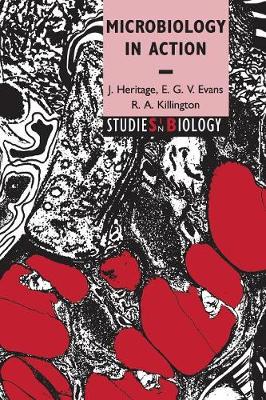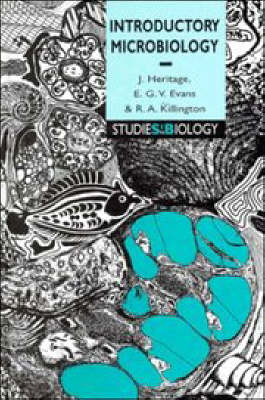Studies in Biology
3 total works
Microbiology in Action
by J. Heritage, E. G. V. Evans, and R. A. Killington
Published 1 January 1999
Microbes play an important role in our everyday lives. As agents of infectious disease they cause untold human misery, yet their beneficial activities are manifold, ranging from the natural cycling of chemical elements through to the production of food, beverages and pharmaceuticals. In this introductory level text the authors provide a clear and accessible account of the interactions between microbes, their environment and other organisms, using examples of both beneficial and adverse activities. The book begins by considering beneficial activities, focusing on environmental microbiology and manufacturing, and then moves on to consider some of the more adverse aspects, particularly the myriad of diseases to which we are susceptible and the treatments currently in use. This book is the companion to Introductory Microbiology, also published in this series, and is essential reading for biological science and medical undergraduates, as well as being of interest to sixth form students and their teachers.
Introductory Microbiology and Microbiology in Action 2 Volume Paperback Set
by John Heritage, Glyn Evans, and R. A. Killington
Published 1 July 1999
Microbes play an important role in our everyday lives. As agents of infectious diseases they cause untold human misery, yet their beneficial activities are manifold, ranging from the natural cycling of chemical elements through to the production of food, beverages and pharmaceuticals. Introductory Microbiology is a basic and accessible introduction to the world of microbiology. It covers the structure and functioning of microbes as well as the methods used to culture, control, identify and study them. In Microbiology in Action, the authors provide a clear and accessible account of the interactions between microbes, their environment and other organisms, using examples of both beneficial and adverse activities. Now published as a two volume set, Introductory Microbiology and Microbiology in Action are essential reading for biological science and medical undergraduates, as well as being of interest to sixth form students and their teachers.
Introductory Microbiology
by J. Heritage, E. G. V. Evans, and R. A. Killington
Published 26 January 1996
The authors present a basic and accessible introduction to the world of microbiology. In three sections, this book provides both a foundation and overview of the subject. In the first section, 'Microbial Structure and Mode of Life', the structure and functioning of fungi, bacteria and viruses are discussed (with particular attention being paid to their description and discussion of their reproduction and nutrition). The second section, 'Handling Microbes' introduces the methods used to culture, control and study these organisms in the laboratory. The final section covers the 'Isolation, Classification and Identification of Microbes'. This book is essential reading for anyone becoming interested in this subject, whether it be 6th form students, their teachers, or undergraduates.


